I actually hate the new Outlook for Windows
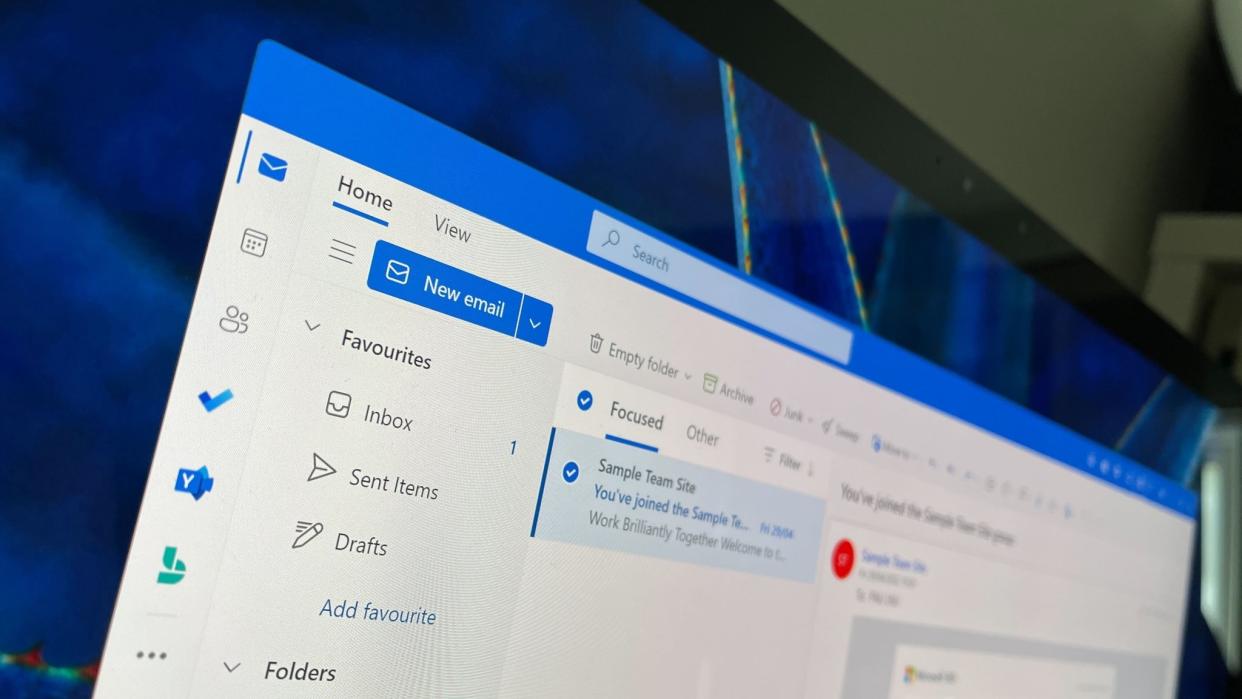
I am one of the few people who genuinely enjoys the current built-in Mail & Calendar apps on Windows 10 and Windows 11. I think they look great, function well enough, and have (historically) been quite reliable. They're lightweight, fast, and compatible with almost any email service you can throw at it.
So when I reported that Microsoft was planning to replace the Mail & Calendar apps with a new, unified web app based on Outlook.com back in 2021, I was a little worried. On one hand, Outlook.com is a functionally great website with lots of features that rival Gmail.com and other popular web-based email services.
On the other hand, replacing a fast and lightweight native client with a web app almost always ends with an overall worse end-user experience, whether that be due to a lack of features, UI consistency issues, performance degradation, and more. With all that in mind, I decided to hold off on any judgment until I could try out the new app for myself. I was hopeful that it would be good.
Bad news, it sucks
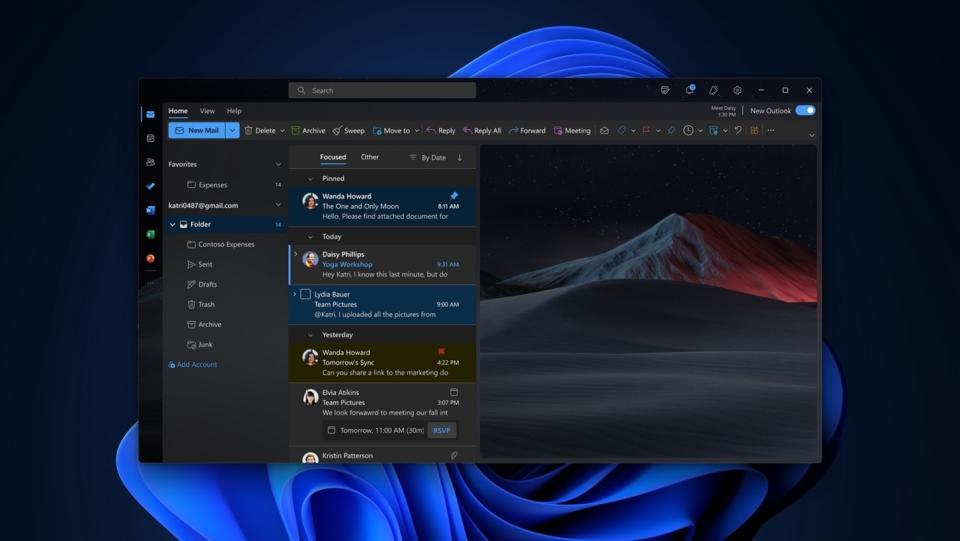
Microsoft launched the new Outlook web app in preview last year, and I have been using it as a daily driver ever since. To be clear, Microsoft says the app is still in preview, but it's already automatically pinning the app on every Windows 11 user's Start menu, and the built-in Mail & Calendar apps are encouraging users to switch to the new client now.
So even though Microsoft is hiding behind a "preview" banner, the company clearly thinks the app is good enough to push to the general population regardless. And because of this, I'm not waiting for a "final build" to share my thoughts on this app. In short, it's terrible. I hate it, and I want the old Mail & Calendar back.
I genuinely think the new Outlook for Windows is the worst built-in OS email client of any OS platform on the market right now. Samsung Email is better than this. Gmail is better than this. Apple Mail is better than this. Why? Because all of those apps are built using native UI frameworks that integrate with the OSs they're built for.
My first big issue with Outlook for Windows is just how much of a Windows app it doesn't look like. It feels like a website because it is. There are pretty much no ties to Windows, and it doesn't even attempt to blend in with Windows 11's design language. The window controls along the top aren't even aligned with the web buttons that are next to them.
And it's not just how it looks that grinds my gears, but how it feels too. It just doesn't feel good to use. I can't really explain this problem, but clicking around on things like buttons and emails just doesn't feel responsive. There's a half-second wait between clicking on something and seeing the result of that click. Why?
Not even kidding, running Outlook for Android via the Windows Subsystem for Android feels more responsive than running the Outlook for Windows app. It's a shame too that the web app doesn't work well with touchscreens, both the old Mail app and the Android app running on Windows are easier to use with touch.
I also hate how the app doesn't have a unified inbox for multiple accounts, forcing you to switch between different inbox views to see all your emails if you're using more than one account. Also, having "empty inbox" and "mark all as read" right next to each other in the right-click menu on the Inbox folder is a bold choice.
Reliability is out the window
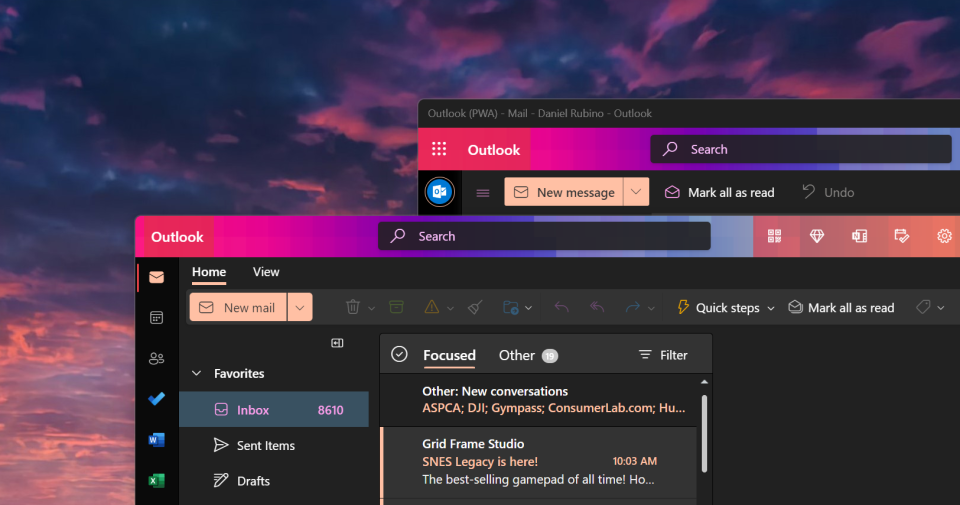
My second big issue is with performance. The app just takes too long to load. Why am I seeing a splash screen for more than a second? It should be taking me straight to my inbox instead of showing me a logo for long enough that it plays a cute little animation. Why is it taking so long? The old Windows Mail app launches at least a whole second or two faster than the new Outlook for Mail.
Just because I was curious, running both Outlook for Windows and the old Mail app side by side, Task Manager reports that Outlook for Windows consumes around 373MB of RAM, whereas the old Mail app uses just 100MB of RAM.
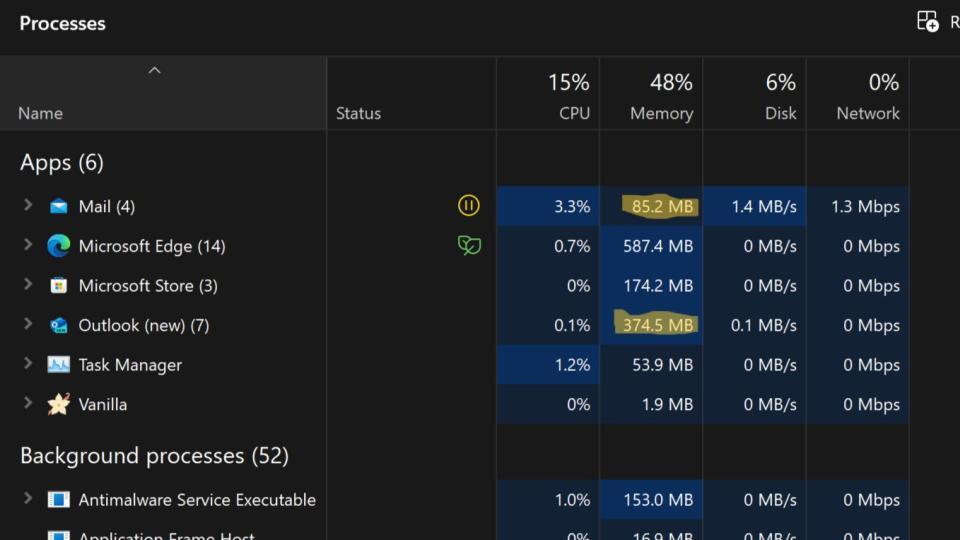
Push notifications? Reliability is out the window. Sometimes, the new Outlook will send me a push notification for a recent email; sometimes, it won't. And if it does, it's almost always after the older Mail app has alerted me first. For whatever reason, push notifications are delayed in the new Outlook for Windows, likely because it's not a native Windows app, and when the app is closed, it's not able to constantly check for notifications, unlike the old Mail app.
And even when those push notifications come in, clicking on one results in an experience, I can only describe as frustrating. I'll click the notification, the notification will disappear, and then literally nothing will happen on screen for at least a few seconds before Outlook decides to open and show my inbox... not the email that I clicked the notification for, but my general inbox.
So, I manually clicked into the email that the notification popped for and began reading. After maybe 8 seconds in that email, the Outlook client pops open an additional window with the same email that I clicked on via the notification. So, ultimately, it's taking something like 10-15 seconds to open an email from a notification, and that doesn't even consider the delay between the email arriving in my inbox and the notification popping.
I want the old app back
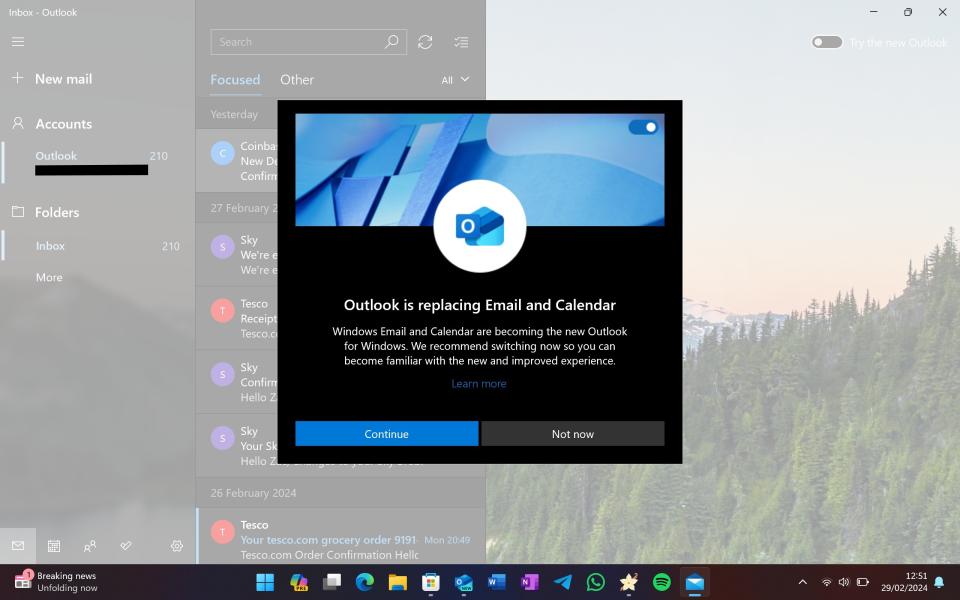
These are just some of the top issues I have with the new Outlook for Windows. I don't enjoy using this app, not even a little bit. I can't imagine how people using classic Outlook for Windows are going to feel about this app when Microsoft ultimately forces it upon them, too.
I know the app is branded as a preview, and Microsoft probably will get around to fixing some of these issues over time. But there's no fixing the fact that it's a web app that doesn't even attempt to make itself feel at home on Windows. It doesn't look or feel like a Windows app, and it's definitely not as fast or as lightweight as the old Windows Mail & Calendar apps.
So, I'm going back to using Mail & Calendar for as long as they work on Windows. Microsoft intends to remove Mail & Calendar from the Microsoft Store later this year, but I'm hoping sideloading the apps will continue to work thereafter.


